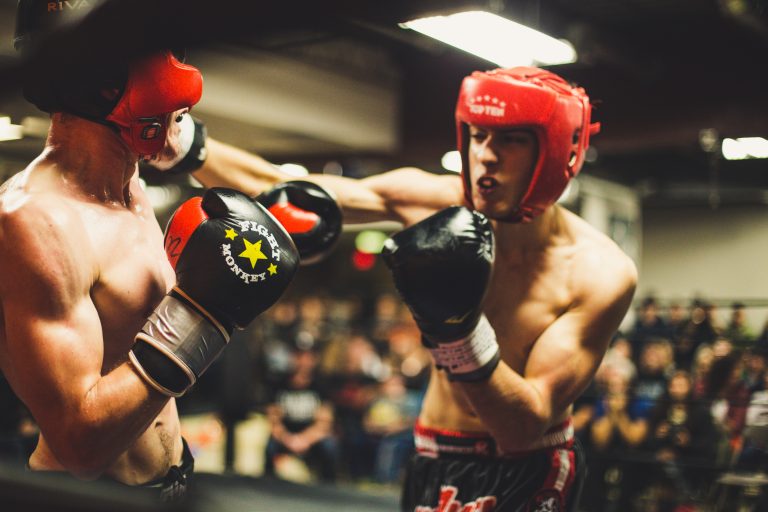How to Start Karate Classes: A Comprehensive Guide
Are you interested in learning karate, improving your fitness, and mastering self-defense techniques? Starting karate classes is a great way to achieve these goals and many more. But how do you begin? What should you expect in your first few lessons? In this guide, we will give you all the information you need to know to start your karate journey.
Why Start Karate Classes?
Karate is a martial art that originated in Okinawa, Japan. It has since spread all over the world, and for good reason. Karate offers a wide range of benefits, including:
- Increased strength and cardiovascular fitness.
- Improved flexibility, balance, and coordination.
- Stress relief and mental clarity.
- Development of self-discipline, focus, and respect.
- Preparation for self-defense situations.
Finding a Good Karate School
The first step in starting karate classes is finding a good school. Here are some factors to consider when choosing a karate school:
Experience and Qualifications of Instructors
Make sure that the instructors at the karate school have relevant experience and qualifications. They should be able to explain karate techniques clearly and provide feedback that can help you improve.
Curriculum
A good karate school should have a structured curriculum that covers all aspects of karate, including basics, forms, sparring, and self-defense. Look for a school that has a clearly defined belt system and a pathway to advancement.
Facilities
The facilities at the karate school should be clean, safe, and well-maintained. Look for a school that has enough space to accommodate its students and that uses equipment that is in good condition.
Community and Atmosphere
Karate classes should be fun and welcoming. Look for a school that has a friendly atmosphere and a community of students and instructors who are supportive and encouraging.
The First Lesson
Once you have found a good karate school, it’s time for your first lesson. Here’s what you can expect:
Introduction
In the first lesson, you will likely be introduced to the instructors and other students. The instructors should explain the basics of the class, the school’s expectations for students, and any safety protocols.
Warm-Up
After the introduction, you will likely start with a warm-up that includes stretching and calisthenics. This is important to prevent injury and prepare your body for the activities to come.
Technique Instruction
Next, the instructor will likely start teaching you basic techniques, such as punches and kicks. They will demonstrate the technique and then have you practice it with a partner or on your own.
Cool-Down
Finally, the lesson will likely end with a cool-down that includes stretching and deep breathing to calm your body and mind.
What to Wear and Bring
It’s important to wear the right clothing and bring the right gear when starting karate classes. Here’s what you’ll need:
Clothing
You should wear loose, comfortable clothing that allows for a range of movement, such as a t-shirt and sweatpants or karate gi. Avoid clothing with zippers, buttons, or other hard objects that can cause injury.
Footwear
Most karate schools require bare feet on the training mat, but you may need to wear shoes when walking to and from the mat. Make sure your shoes are comfortable and provide good support.
Gear
You may need to bring some protective gear, such as gloves, shin guards, and mouthguards, depending on the activities you will be doing in class. Check with your instructor or the school’s website to see what gear is required.
How to Start Karate Classes: Frequently Asked Questions
Karate is one of the most popular martial arts in the world. It is an excellent form of self-defense, discipline, and exercise. If you are interested in starting karate classes, there are countless questions that you may be asking yourself. In this article, we will cover some of the most frequently asked questions about starting karate classes.
What is Karate?
Karate is a martial art that originated in Okinawa, Japan during the early 20th century. It involves a combination of strikes, blocks, and kicks to defend oneself from an attacker. The primary goal of karate is not to attack but to defend oneself.
What are the Benefits of Learning Karate?
Karate has numerous benefits beyond self-defense. It improves physical fitness, balance, flexibility, and coordination. It also enhances mental wellbeing as it teaches self-discipline, focus, and stress management. Karate is suitable for people of all ages, and it is never too late to start learning.
What are the Different Styles of Karate?
There are various styles of karate, including Shotokan, Goju-Ryu, Wado-Ryu, Shito-Ryu, and Kyokushin. Each has its unique techniques and training methods. However, the core principles remain the same across all styles.
What Should I Look for in a Karate School?
Choosing the right karate school is essential to get a comprehensive karate education. Here are some things to look for when choosing a school:
Qualified Instructors:
Ensure that the school has qualified and experienced instructors. The instructors should have a background in martial arts and be certified to teach karate.
Clean and Safe Environment:
Check that the school has a clean and safe training area with appropriate gears, such as mats, gloves, and protective equipment.
Class Schedule:
Consider the class schedule and make sure it aligns with your availability. Also, check whether they offer classes for your age, skill level, and interest.
Teaching Methodology:
The teaching methodology and curriculum should be suitable for your learning style and goals. Some schools focus on tournaments and competitions, while others emphasize self-defense or traditional values.
What Should I Wear for My First Karate Class?
Most karate schools require students to wear a traditional Gi, which is a white garment with a belt that denotes the skill level. It is recommended to ask the instructor about the dress code before attending the class. Also, avoid wearing jewelry, watches, or anything that could cause injury or interfere with training.
Do I Need Prior Experience to Start Karate Classes?
No. Most karate schools cater to beginners and offer introductory classes for those with no prior experience.
What Can I Expect from My First Karate Class?
Your first karate class will likely focus on basics, such as how to stand and execute proper punches and kicks. You may also learn some terminology and etiquette, such as bowing and addressing the instructor. Don’t worry about getting everything right from the start, as it takes time and practice to master karate techniques.
How Long Does it Take to Learn Karate?
Karate is a lifelong learning journey, and it can take several years to achieve a black belt or master level. However, you can start seeing the benefits of karate almost immediately, such as improved strength, flexibility, and focus.
How Much Do Karate Classes Cost?
The cost of karate classes varies depending on the location, the school, the instructor’s qualifications, and the class frequency. It is essential to consider your budget when choosing a karate school as it could be a significant financial commitment.
How to Start Karate Classes
Introduction
Karate is a martial art that has been practiced for centuries. It is a great way to improve fitness, learn self-defense, and build self-confidence. If you’re interested in starting karate classes, this guide will help you get started.
Step 1: Research
The first step to starting karate classes is to do your research. Look for local karate schools and classes in your area. You can start by searching online or checking your local phone book. Look for schools that have good reviews and a solid reputation.
Step 2: Schedule a Visit
Once you’ve found a few potential karate schools, schedule a visit. Many schools offer a free trial class or tour. Take advantage of this opportunity to see the school and meet the instructors. This will give you a better idea of what to expect and whether the school is a good fit for you.
Step 3: Choose a Class
Karate classes are typically divided into groups based on skill level and age. Choose a class that fits your skill level, age, and fitness level. Most schools offer classes for children, teenagers, and adults.
Step 4: Purchase Equipment
Before your first class, you’ll need to purchase karate equipment. This typically includes a gi (karate uniform), a belt, and protective gear like gloves and shin guards. Talk to your instructor about what gear you’ll need and where to purchase it.
Step 5: Attend Your First Class
It’s normal to feel nervous before your first karate class, but remember that everyone starts at the beginning. Arrive early to your first class so that you can get changed and mentally prepare. During the class, pay attention to the instructor and follow their directions.
Step 6: Practice Consistently
Karate is a discipline that requires practice and consistency. Make a commitment to attend classes regularly and practice at home. This will help you improve your skills and progress through the ranks.
Step 7: Graduation
Karate ranks typically use a belt system to signify skill level. As you progress through the ranks, you’ll earn different colored belts. Your school may have its own graduation ceremony to mark your progress and award your new belt.
Conclusion
Starting karate classes is a great way to improve your physical fitness, learn self-defense, and build self-confidence. Research local schools, schedule a visit, choose a class, purchase equipment, attend your first class, practice consistently, and celebrate your progress. With dedication and hard work, you can become a skilled karate practitioner.
Inhaltsverzeichnis






